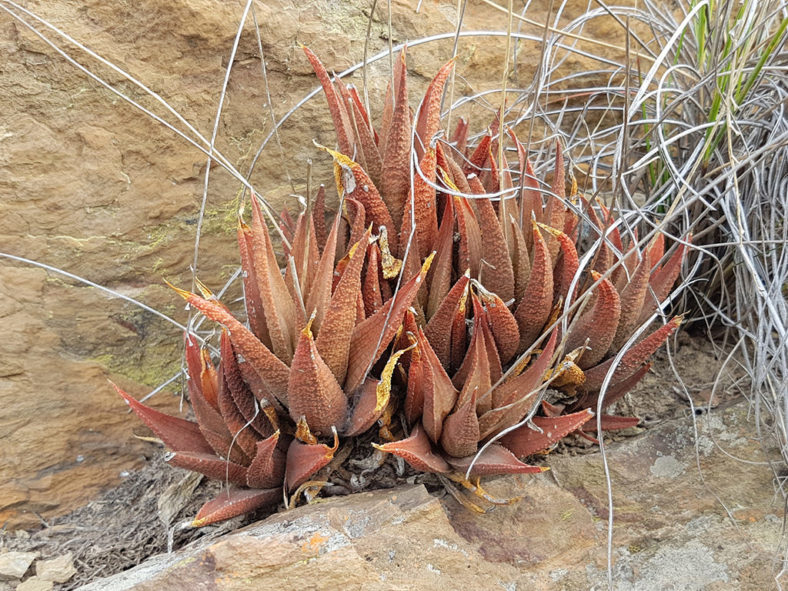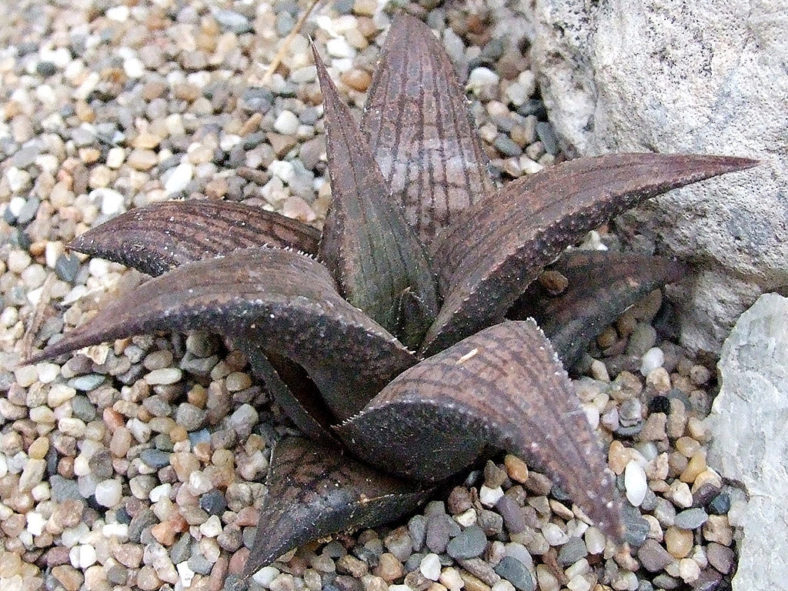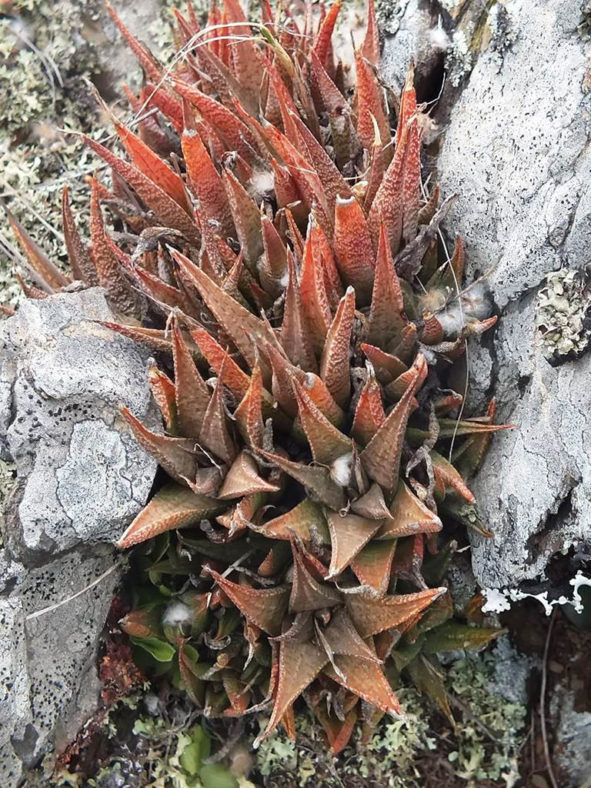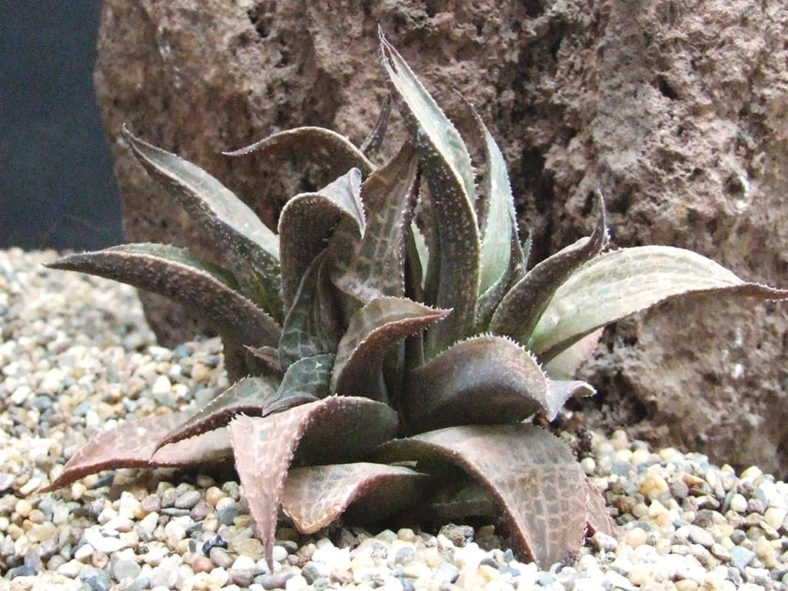Scientific Name
Haworthiopsis venosa (Lam.) G.D.Rowley
Common Name(s)
Breede Haworthia
Synonym(s)
Aloe venosa, Catevala venosa, Haworthia venosa
Scientific Classification
Family: Asphodelaceae
Subfamily: Asphodeloideae
Tribe: Aloeae
Genus: Haworthiopsis
Origin
Haworthiopsis venosa is native to South Africa. It occurs in the Breede River Valley.
Description
Haworthiopsis venosa, formerly known as Haworthia venosa, is a small succulent that forms slowly proliferous, usually stemless rosettes of fleshy, dark green to brownish leaves with veins arranged in a net-like pattern on the upper surface. It can grow up to 12 inches (30 cm) tall, forming a dense clump. The leaves are ovate-deltoid with a smooth upper surface and a usually slightly scabrid lower surface. They can measure up to 4 inches (10 cm) long and 0.6 inches (1.5 cm) wide. In habitat, the leaves are always erect, while they tend to recurve in cultivation. The margins of the leaves have white recurved teeth.
The flowers are small, white with a green midrib, and appear in a raceme at the end of lax, sparsely branched stalks in summer. The flower stalks can grow up to 20 inches (50 cm) long.

Hardiness
USDA hardiness zone 9b to 11b: from 25 °F (−3.9 °C) to 50 °F (+10 °C).
How to Grow and Care
These succulents are not considered difficult houseplants to grow. If you can keep a pot of Aloe alive on a windowsill, chances are you can do the same with a dish of Haworthia. As with all succulents, the most dangerous situation is too much water. They should never be allowed to sit in water under any circumstances. At the same time, these small decorative plants can be grown in interesting containers such as teacups and even miniature baby shoes. If you're given a Haworthia in such a container, ensure the container has adequate drainage.
Haworthias are small, usually between 3 and 5 inches (7.5 cm and 12.5 cm) in height, and relatively slow-growing. Therefore, they are often grown in small clusters in wide, shallow containers. Over time, clusters will naturally enlarge as the mother plant sends off small plantlets. When the cluster has outgrown its container, repot into a new wide and shallow container with fresh potting soil in the spring or early summer. This is also the time to take offsets for propagation.
See more at How to Grow and Care for Haworthia.
Links
- Back to genus Haworthia
- Succupedia: Browse succulents by Scientific Name, Common Name, Genus, Family, USDA Hardiness Zone, Origin, or cacti by Genus
Photo Gallery
Click on a photo to see a larger version.



